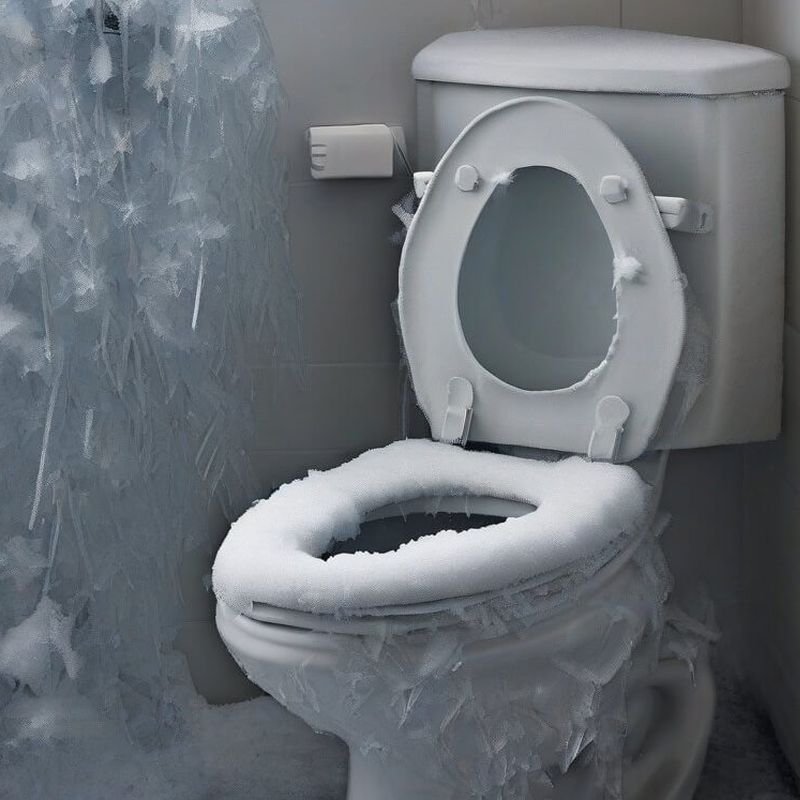 English
English
Jabra Sanitary is a sanitaryware supplier offering toilets, sinks, faucets, bathtubs, etc., at competitive prices. If you're a distributor, wholesaler, or project contractor, get a quote today!
 $23.9 Limited-time Offer
$23.9 Limited-time Offer Consignment Policy
Consignment Policy 20 Years of Experience
20 Years of Experience
Faucets are essential fixtures in every home, playing a crucial role in daily tasks like washing dishes, filling pots, or cleaning hands. They often go unnoticed until something goes wrong. But understanding faucet parts can make maintenance and troubleshooting a breeze.
This guide aims to provide you with everything you need to know about the parts of a faucet, how it works, and how to maintain it. Plus, we'll cover the costs of repairs and whether it's better to DIY or hire a professional.
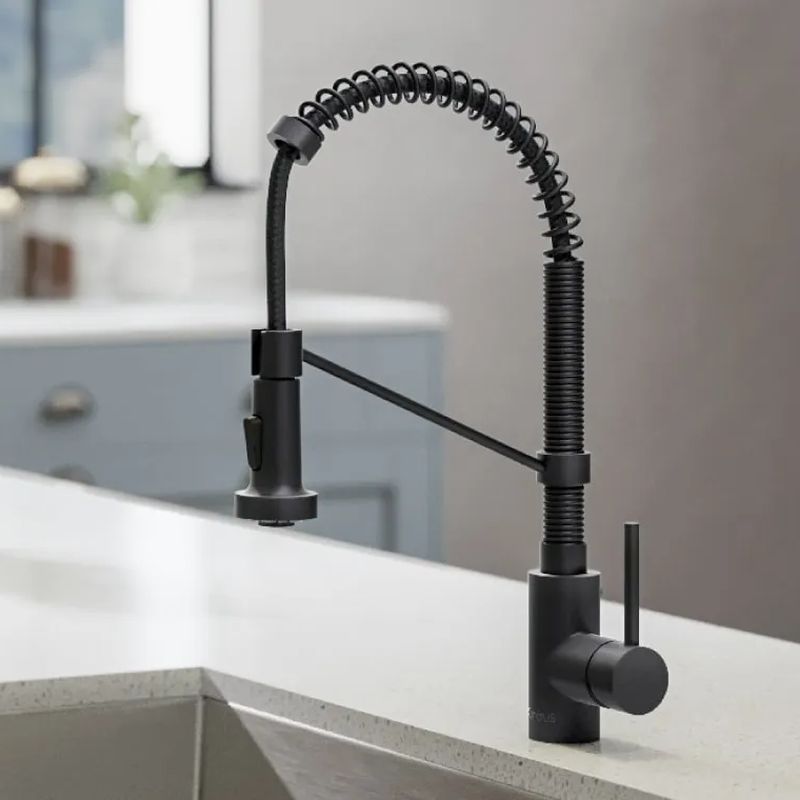
Table of Contents
Common Sink Faucet Parts and How Do They Work
Some Less-Known Parts of a Faucet
The Materials Used in the Anatomy of a Faucet
How to Maintain the Parts of a Faucet for Longevity
Common Faucet Component Problems and Solutions
Cost to DIY Faucet Parts Repairs vs. Hiring a Pro
FAQs
Conclusion
Common Sink Faucet Parts and How Do They Work
Understanding the main parts of a faucet is essential for any homeowner. Each component plays a crucial role in how the faucet functions.
Knowing how they work together will help you identify any issues more easily. Here's a breakdown of the common sink faucet parts:
1. Handle
The handle is perhaps the most noticeable part of the faucet. It is used to control the flow of water and sometimes its temperature.
Depending on the design, a faucet may have one handle or two — one for hot and one for cold. The handle connects to the internal mechanism that opens and closes the valve, allowing water to flow when turned.
How it works: When you turn the handle, it moves a valve inside the faucet, controlling the flow of water. Some modern faucets have a lever handle that is easier to use and requires less force.
2. Spout
The spout is the part of the faucet where the water exits. It is typically located at the end of the faucet body. It is shaped to direct the water flow where it's needed, such as into a sink or a basin.
How it works: The spout simply directs the water once the valve is open. Some faucets have adjustable spouts for flexibility, while others may have a fixed spout that stays in one position.
3. Valve
The valve is the core part of the faucet that controls the water flow. It can be found inside the faucet body, and it is responsible for opening and closing the water supply. Depending on the faucet style, the valve may be ceramic, compression, or ball-type.
How it works: When you turn the handle, it rotates or lifts a valve mechanism that either blocks or allows water to flow. Ceramic valves are more durable. Compression valves tend to wear out faster, leading to leaks.
4. Aerator
The aerator is a small and mesh-like device located at the tip of the faucet spout. Its primary function is to mix air into the water flow, which reduces water splashing and conserves water.
How it works: As water passes through the aerator, air is forced into the stream, making the water flow smoothly and efficiently.
This also helps reduce water usage by limiting the amount of water flowing out at any given time.
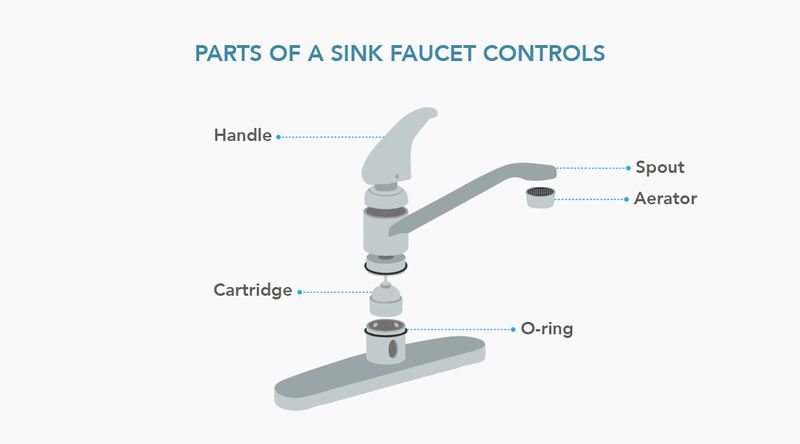
5. Body
The body of the faucet is the main structure that holds all the parts together. It houses the valve, handle, and other internal components. It is typically made from metals like brass or stainless steel. But it can also be made from other materials like plastic or zinc.
How it works: The body is designed to contain the internal plumbing and mechanisms that allow the faucet to function. It ensures the faucet remains stable and that all components stay in place.
6. Mount and Escutcheon Plate (Deck mount/Wall mount)
The mount and escutcheon plate secure the faucet to the sink or countertop. The mount is the base, while the escutcheon plate is the decorative trim around the faucet.
These faucet parts are especially important for keeping the faucet in place and ensuring a secure installation.
How it works: The mount holds the faucet to the sink or countertop, while the escutcheon plate covers any gaps between the faucet and the surface.
Depending on the faucet design, these parts may be attached to the sink via screws or adhesives.
Some Less-Known Parts of a Faucet
While many people are familiar with the main sink faucet components, several lesser-known parts play a significant role in the faucet's performance and longevity. Here's a look at some of these hidden but important faucet parts:
1. O-rings
O-rings for sinks are small rubber or silicone seals found in various parts of the faucet, such as around the handle or valve. These seals help prevent leaks by creating a watertight seal between moving parts.
2. Cartridge or Stem
The cartridge or stem is the internal mechanism that controls the flow and temperature of water in the faucet. It is located inside the faucet body. It is responsible for regulating the water pressure and the temperature when you turn the handle.
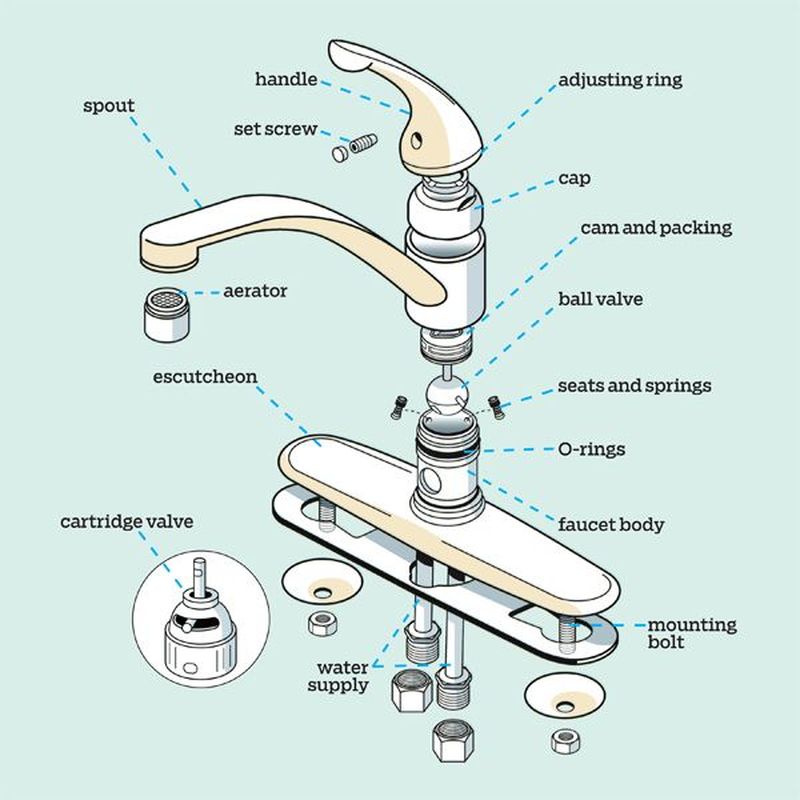
3. Dishwasher Drain Hose
While not part of the faucet itself, the dishwasher drain hose is connected to the faucet through the air gap or directly to the sink drain.
This hose helps divert wastewater from the dishwasher away from the sink. It helps prevent backflow and ensures the wastewater is safely drained.
4. Supply Line Adapters
Supply line adapters connect the faucet to the home's water supply lines. These adapters come in different sizes to fit the specific plumbing in your home. They play a crucial role in making sure the faucet has a steady flow of water.
5. Diverter Valve
The diverter valve is typically found in faucets that have a shower or tub spout attachment. It controls whether water flows out of the faucet or diverts to another outlet, such as a showerhead.
The Materials Used in the Anatomy of a Faucet
When choosing a faucet, it's important to consider the materials used in its construction. The material not only affects the appearance of the faucet but also impacts its durability, resistance to corrosion, and overall performance.
Here's a breakdown of the common materials used in faucet construction:
1. Chrome
Chrome is one of the most popular materials for faucets due to its sleek and shiny appearance and resistance to corrosion. It is a type of metal plating applied to the faucet's surface to give it a reflective and mirror-like finish.
Chrome is durable and relatively inexpensive, making it a common part for both kitchen and bathroom faucets.
Benefits:
- Highly resistant to rust and corrosion
- Easy to clean and maintain
- Affordable
Drawbacks:
- Prone to water spots and fingerprints
- Wear off over time if the faucet is not properly cared for
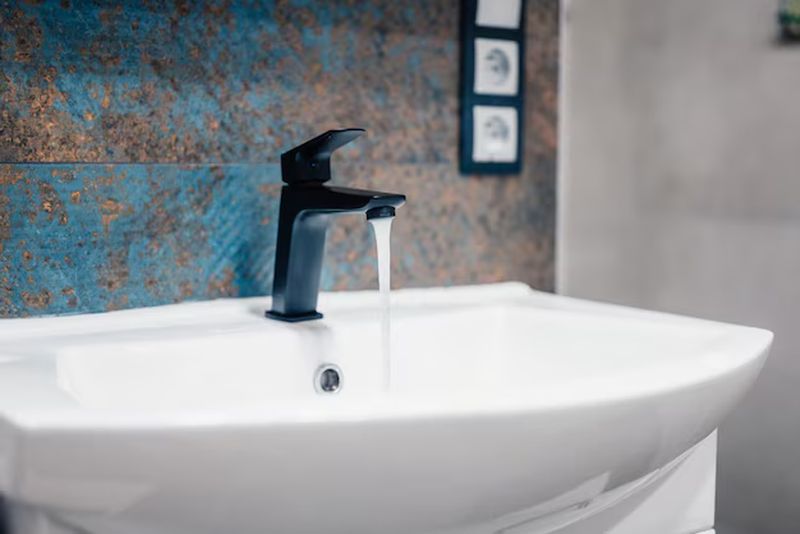
2. Stainless Steel
Stainless steel is a durable and corrosion-resistant metal commonly used in high-end faucets. It has a more understated and matte finish compared to chrome. It is a popular choice for modern or industrial-style kitchens and bathrooms.
Benefits:
- Extremely resistant to rust and corrosion
- Long-lasting and strong
- Low maintenance with a sleek look
Drawbacks:
- More expensive than chrome
- Water spots or discoloration will develop if not maintained properly
3. Bronze
Bronze faucets offer a vintage and elegant look, often seen in traditional or rustic settings. They are typically made from a combination of copper and tin, giving them a warm and earthy tone.
Over time, bronze can develop a patina, which some people find appealing.
Benefits:
- Beautiful and classic appearance
- Naturally resistant to corrosion and rust
- Aged well, developing a unique patina over time
Drawbacks:
- More expensive than chrome and stainless steel
- Require periodic maintenance to preserve the patina
4. Plastic
Plastic faucets are a more budget-friendly option, often used in utility sinks or less expensive bathroom fixtures. These faucets are lightweight and come in a variety of colors and styles.
While they are generally resistant to corrosion, plastic faucets can be more prone to damage, such as cracking or discoloration.
Benefits:
- Inexpensive
- Lightweight and easy to install
- Resistant to corrosion
Drawbacks:
- Less durable than metal faucets
- Prone to damage from high temperatures or physical impact
- It may discolor or degrade over time
5. Zinc
Zinc is another affordable material used in faucet construction, though it is less common than the other metals.
Zinc faucets are typically alloyed with other metals for improved strength and resistance to corrosion. They offer a good balance of affordability and durability. But they may not last as long as stainless steel or bronze faucets.
Benefits:
- Affordable
- Resistant to corrosion and rust when alloyed properly
- It can be molded into various shapes and designs
Drawbacks:
- Not as durable as stainless steel or bronze
- It can corrode if not properly protected or maintained
How to Maintain the Parts of a Faucet for Longevity
Proper maintenance is essential to ensure your faucet continues to function smoothly and lasts for many years. Neglecting regular care can lead to wear and tear, leaks, and costly repairs.
Here are some tips on how to maintain different faucet parts:
1. Clean the Faucet Regularly
One of the easiest and most effective ways to maintain your faucet is by keeping it clean. Regular cleaning helps prevent the buildup of mineral deposits, soap scum, and grime.
How to clean:
- Use a soft cloth or sponge with a mild dish soap solution.
- Avoid harsh chemicals or abrasive cleaners.
- For stubborn mineral deposits, use a vinegar-water solution to soak the faucet for a few minutes before wiping.
2. Inspect and Replace O-rings
O-rings are small, but they play a significant role in preventing leaks. Over time, O-rings can wear out, causing water to leak from the faucet handle or base. Inspect the O-rings periodically and replace them if they appear cracked or worn.
How to maintain:
- Turn off the water supply and disassemble the faucet handle to access the O-rings.
- Check for signs of wear, such as cracks, tears, or hardening.
- Replace the O-rings with new ones to stop leaks.
3. Check and Replace the Cartridge or Stem
The cartridge or stem controls water flow and temperature. Over time, these faucet stem and cartridge parts can become clogged with mineral buildup or wear out.
It can cause issues such as a stiff handle, low water pressure, or erratic water temperature.
How to maintain:
- If you notice any of these issues, it might be time to replace the cartridge or stem.
- Turn off the water supply, remove the handle, and access the cartridge.
- Clean it gently with a vinegar-water solution or replace it if it's damaged.
4. Prevent Corrosion with Regular Lubrication
The moving parts inside the faucet, such as the valve and handle, can wear down and corrode over time. To prevent this, it's essential to lubricate these parts regularly. This will ensure smooth operation and reduce the risk of rust and corrosion.
How to lubricate:
- Use a silicone-based lubricant (avoid petroleum-based lubricants, which can damage O-rings and seals).
- Apply the lubricant to the moving parts, such as the handle and valve.
- Wipe away any excess lubricant to avoid attracting dirt and debris.
5. Maintain the Aerator
The aerator is a small but important component that helps conserve water and reduce splashing. Over time, mineral deposits can clog the aerator, which reduces water flow and efficiency.
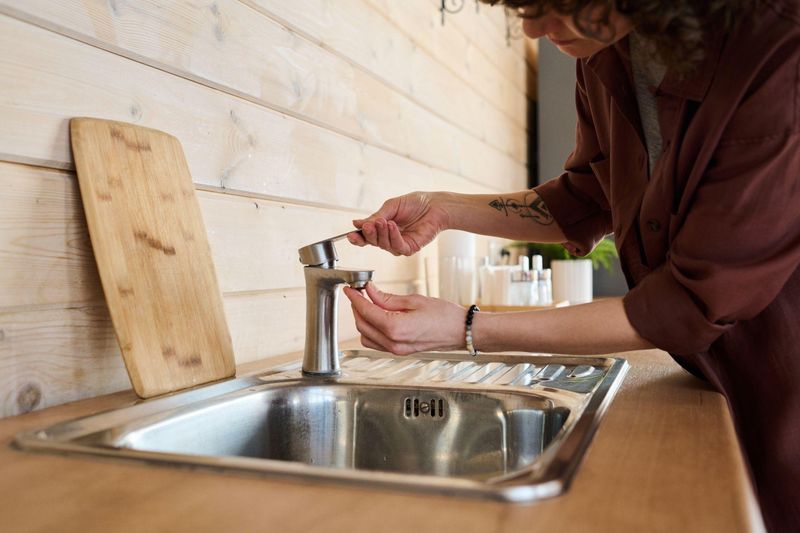
How to maintain:
- Remove the aerator by unscrewing it from the faucet spout.
- Soak it in a vinegar-water solution for 15-30 minutes to dissolve mineral deposits.
- Rinse thoroughly and reinstall the aerator to restore optimal water flow.
6. Keep the Faucet Dry
Water spots, soap scum, and mineral deposits can build up on the faucet over time. This can lead to corrosion and discoloration. After each use, wipe the faucet dry with a soft cloth to prevent these buildups from forming.
How to maintain:
- Dry the faucet with a clean towel or microfiber cloth after each use.
- For stainless steel faucets, you can also use a specialized cleaner to maintain a streak-free shine.
7. Handle with Care
When operating the faucet, avoid using excessive force, especially with older faucets. Rough handling can damage the handle or valve, leading to leaks and difficulty in adjusting water flow.
How to maintain:
- Turn the handle gently and avoid over-tightening.
- If you notice the handle becoming stiff, apply lubricant to the moving parts or replace the cartridge if necessary.
Common Faucet Component Problems and Solutions
Even with regular maintenance, the anatomy of a faucet can sometimes develop issues. Understanding the common problems and knowing how to solve them can save you time, frustration, and potentially expensive repairs.
Here are some common faucet components problems and their solutions:
1. Leaky Handle
A leaky handle is one of the most common faucet problems. If you notice water dripping from the handle, it usually indicates an issue with the internal valve or a worn-out O-ring.
Solution:
- Turn off the water supply and disassemble the handle to access the valve and O-rings.
- Inspect the O-rings for damage and replace them if necessary.
- If the valve is damaged or worn, consider replacing the cartridge or stem.
2. Low Water Pressure
Low water pressure is a frustrating problem that can make everyday tasks more time-consuming. This issue can be caused by several factors, such as a clogged aerator or a problem with the water supply lines.
Solution:
- Check the aerator for mineral deposits and clean it using a vinegar-water solution.
- Inspect the supply lines for blockages or leaks. If you find any issues, consider replacing the affected pipes or fittings.
- If the problem persists, the issue may be related to the plumbing system, and you might need to consult a plumber.
3. Erratic Water Temperature
If the water temperature fluctuates unexpectedly when you adjust the handle, the cartridge or valve may be malfunctioning. This can also occur if the faucet's hot and cold water supply lines are not balanced.
Solution:
- Check the cartridge or stem for signs of wear or mineral buildup. Clean or replace the part as needed.
- Make sure the hot and cold water supply lines are properly connected and balanced. If necessary, adjust the temperature limiters in the faucet.
4. Dripping Spout
A dripping spout can be caused by a worn-out washer, a damaged valve, or mineral buildup inside the faucet. This is not only annoying but can also waste water over time.
Solution:
- Turn off the water supply and disassemble the faucet to inspect the valve and washer.
- Replace any worn or damaged parts, including washers, O-rings, and seals.
- If mineral deposits are causing the issue, clean the faucet components with vinegar or a descaling solution.

5. Squeaky Handle
A squeaky handle can be caused by friction between the handle and its internal components, such as the valve or stem. Lack of lubrication is often the culprit.
Solution:
- Apply a silicone-based lubricant to the moving parts, such as the handle and valve.
- If the squeaking persists, check the cartridge or stem for damage and replace it if needed.
6. Stiff Handle
A stiff handle can be caused by mineral deposits, a lack of lubrication, or a worn-out cartridge or stem. This can make it difficult to control the flow and temperature of the water.
Solution:
- Lubricate the handle and valve components to reduce friction.
- If the handle is still stiff, the cartridge or stem may need to be replaced.
- If the faucet is old, consider upgrading to a newer model with smoother operation.
7. Rusty or Corroded Finish
Rust or corrosion on a faucet can occur when the finish is scratched or damaged, exposing the underlying metal to moisture. This problem is more common in faucets made from low-quality materials like zinc or plastic.
Solution:
- For minor rust, use a gentle scrubber and a rust-removal solution to clean the faucet.
- If corrosion is widespread, you may need to replace the faucet or apply a new coat of protective finish to prevent further damage.
- To avoid rust, ensure that the faucet is kept dry and clean. Avoid using harsh chemicals that can damage the surface.
Cost to DIY Faucet Parts Repairs vs. Hiring a Pro
When it comes to faucet repairs, one of the most common dilemmas homeowners face is whether to tackle the job themselves or hire a professional plumber.
The decision often comes down to cost, time, and the complexity of the issue. Here's a breakdown of the cost differences between DIY faucet part repairs and hiring a pro:
DIY Faucet Repairs |
|
Hiring a Professional Plumber |
|
When to DIY vs. Hire a Pro |
|
FAQs
Here are some frequently asked questions about faucet parts, repairs, and maintenance. These answers can help you make informed decisions about installation, upkeep, and troubleshooting.
How do I know what type of faucet I need?
Choosing the right faucet depends on several factors, including the style of your sink, your water usage needs, and your personal preferences. You should consider:
- Faucet type: Single-handle, double-handle, or pull-out/pull-down.
- Installation style: Deck-mounted or wall-mounted.
- Material and finish: Chrome, stainless steel, or bronze for durability and aesthetics.
- Functionality: Features like water flow control, aerators, or a sprayer.
How often should I replace my kitchen faucet?
There's no set timeline for replacing a kitchen faucet, but you should consider replacing it when:
- It begins leaking or showing signs of corrosion.
- The handle or spout becomes difficult to operate.
- There are visible cracks or damage that can't be repaired.
In general, a well-maintained faucet can last 10-15 years before needing replacement.
Can I install a kitchen faucet myself?
Yes, many homeowners can install a kitchen faucet themselves with basic tools and plumbing knowledge. If you're comfortable with DIY projects, you can save on installation costs.
However, if you're unsure about your plumbing skills or face a more complex installation, hiring a professional plumber is always a good idea.
What problems can a leaky faucet cause?
It can lead to several issues:
- Water wastage: Even a small leak can waste gallons of water over time, driving up your water bill.
- Damage to surrounding areas: Constant dripping can cause water damage to your sink or countertop, leading to mold or stains.
- Increased wear on parts: A leaky faucet often indicates a worn-out part, such as a valve or O-ring. This can lead to further damage if left unchecked.
Which faucets are most prone to leaking and require maintenance?
Certain faucet types are more prone to leaks and require more frequent maintenance:
- Compression faucets: These faucets use rubber washers that wear out over time.
- Cartridge faucets: Although more durable than compression faucets, the cartridge can still wear out or become clogged.
- Ball faucets: Issues with the ball mechanism or seals can cause leaks.
- Ceramic disk faucets: While these are generally very durable, mineral buildup or debris can damage the ceramic disk.
Conclusion
In this guide, we've explored the essential anatomy of a faucet, its materials, and how to maintain and repair it for long-lasting performance. By understanding the anatomy of a faucet, you'll be able to troubleshoot common issues, perform DIY repairs, or make informed decisions when it's time to call a professional.
If you are in need of professional help regarding faucet parts, don't hesitate to reach out for a quote. Jabra sanitary ware supplier is the top choice for you. It is a leading faucet manufacturer for top-quality and innovative solutions to complement your home's style.









